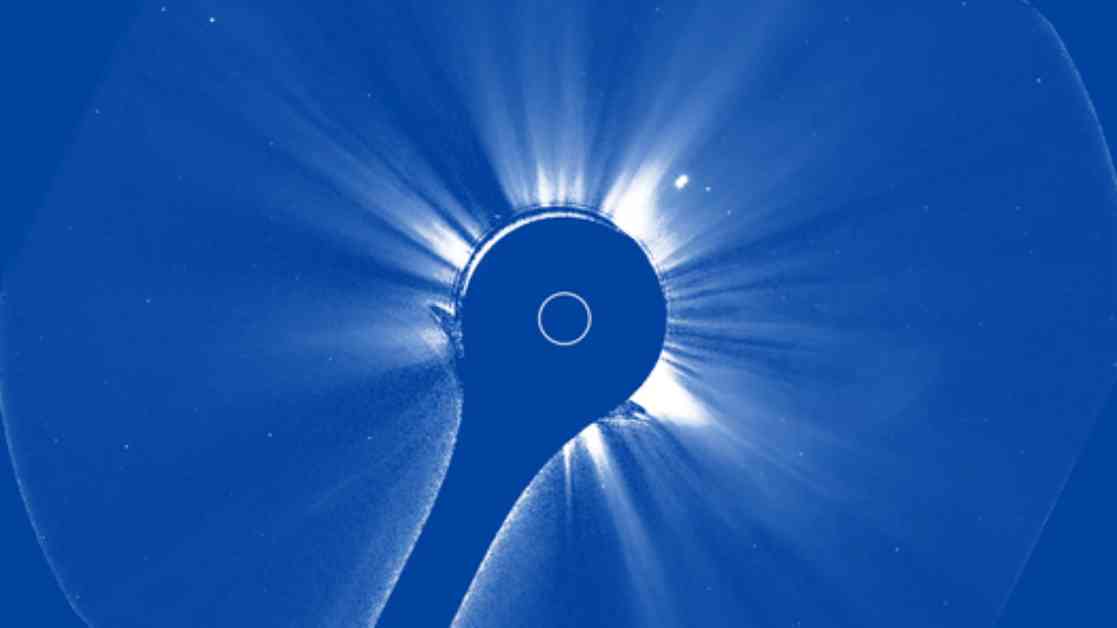The National Oceanic and Atmospheric Administration (NOAA) recently shared the first images taken by its new space-based telescope called the Compact Coronagraph (CCOR-1), which is mounted on the GOES-19 satellite. This satellite was launched into orbit on June 25 and CCOR-1 began its mission to observe the sun’s corona on September 19.
The CCOR-1 telescope uses an occulting disk to block the light from the sun, allowing it to capture images of the sun’s corona. This is a significant advancement in space weather monitoring as space-based instruments like CCOR-1 do not have to deal with Earth’s atmosphere, which can affect the clarity of observations. CCOR-1 will provide earlier warnings of coronal mass ejections (CMEs) that can trigger geomagnetic storms on Earth.
Recently, CCOR-1 captured a CME outburst on September 29, showing a clearly defined CME emerging from the sun’s east limb. While this particular CME was directed away from Earth, solar storms directed towards our planet can disrupt the magnetic field and pose risks to technology and astronauts in space. Monitoring the sun’s corona will help scientists better predict the impacts of CMEs.
The GOES-19 satellite is still undergoing testing to ensure its instruments are operating as expected. Once fully operational in spring 2025, CCOR-1 will aid in space weather forecasting and preparedness. NOAA also plans to launch additional coronagraphs as part of their Weather Follow-On and Space Weather Next initiatives to further monitor the sun from space.
Overall, the new CCOR-1 telescope on the GOES-19 satellite marks a significant step in space weather monitoring, providing clearer observations of the sun’s corona and aiding in predicting the impacts of solar storms on Earth. With improved monitoring capabilities, scientists can better prepare for and mitigate the effects of space weather events.










